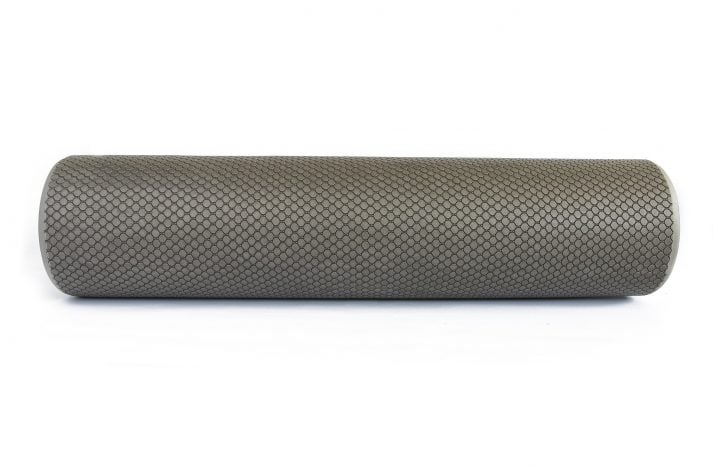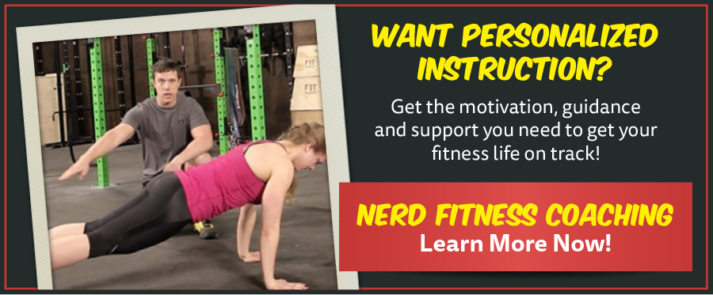In the last few years, the foam roller has become a staple in commercial gyms. 10% of every piece of equipment in a modern fitness facility is now some type of foam roller.
Not true, but they are indeed everywhere.
And with good reason: you can essentially give yourself a deep tissue massage with one of these bad boys. And if you fork out $20 bucks, you don’t even have to leave your home to do it!
So today we’ll chat about these new toys:
- The benefits of using a foam roller
- Some simple exercises you can do from home
- Common pitfalls we want to make sure you avoid
- What to buy should you want one
- Whether or not you should put a cat in one

That last one is definitely a hard “no.”
Let’s get rolling (the puns are only going to get worse from here)
What are the benefits of using a foam roller?

You’ll often hear using a foam roller as “self-myofascial release.”
You may be asking, “myofawhatnow?”
Don’t stress, because “fascia” is just the connective tissue covering muscle. Just know that “self-myofascial release” means giving yourself a tissue massage.
The type of massage you receive has a lot to do with the type of roller you use and the exercises performed. For example, the denser and firmer the roller, the more intense the massage will be. Think the difference between the relaxing touch of a masseur/masseuse and a deep tissue sports massage where you cry out in agony but feel great after.

We’ll start you off with the more relaxing sequence.
Now, it should be noted there is a debate on the actual benefits of “self-myofascial release.” There are some claims that myofascial release will help flexibility and muscle recovery. There are others that say that’s bogus.
What does the science say?
Some of it’s supported:
- A foam roller has been shown to help the range of hip motion in soccer players[1].
- Rolling massages can help alleviate muscle soreness[2].
Some of it is not supported:
- Foam rolling use doesn’t appear to impact the length of muscle[3].
- A study found no help in relieving “tightness” in the hamstring[4].
So yeah, the science isn’t definitive on this. But there does seem to be a lot of anecdotal evidence praising foam rollers.
My take? I think the foam roller is a great tool for temporary pain relief as long as it’s used correctly, but you can’t ignore what caused the soreness in the first place!
Want help getting started?
Beginner foam roller exercises

All you need is some type of roller and some floor space. A yoga mat would be helpful but not required.
We’ll go over four simple exercises to get you going with a foam roller. Think of the following as a relaxing sequence:
- Thoracic Spine
- Glutes (both sides)
- Quads (one at a time)
- Abductors
Take each move for about 20-30 seconds. Hold for major sore spots. Breath deeply, calmly.
I asked Matt Myers, one of our online coaches at Nerd Fitness – he’s hilarious but don’t tell him I said that – to guide you through these moves in this quick video.
Yes, that’s a T-Rex on a foam roller. You’re welcome:
That’s it. Keep it simple at first.
You can do this sequence after a workout. Or even before. Or all by itself. Go wild.
Common mistakes when using a foam roller

I want to make an important point on foam rollers:
As mentioned, one of the benefits is their ability to help with painful or tight areas.
However, it’s important to remember that using a foam roller won’t treat the root cause of the pain. It’s only going to help treat the symptom by easing pain.
As the studies above point out, it’s not quite clear how myofascial release does this.
What I’m trying to say: If you’re working out incorrectly, or in pain because of a sedentary lifestyle, or some other type of issue, using a foam roller won’t fix it. It’ll only help you manage the discomfort. You’ll potentially need outside help to uncover the real issue that’s causing the problem in the first place.
The foam roller is the equivalent of using painkillers to help a broken foot, without first setting any of the bones correctly, or asking the question “Why did you think kicking that brick wall was a good idea in the first place?”
Eek.
So use the foam roller to manage discomfort, but know that it’s not a panacea (boy do I love that word) for all of your ailments and movement issues!
If you’re not sure if you are training correctly, or you’re struggling to not always be dealing with pulled or sore muscles, we are here to help. Matt from our video above, is part of the experienced, fun, non-judgmental staff that make up the Nerd Fitness 1-on-1 Online Coaching Program. Our team can help with many different types of exercises, with or without a roller. Plus, if you’re struggling with weight loss, they can help there too.
Want to see if we are a good fit for each other? Click on the big image below to schedule a free consultation with our Team (you’ll probably speak with Big Red, he’s good people):
Foam roller recommendations

You now know a foam roller can be a super helpful tool to manage pain and discomfort. And thanks to Matt, you even know how to use one.
Want to buy one? You need to think about the following:
- Density: the denser the roller, the more intense the massage you’ll receive.
- Texture: some rollers will have ridges and knots to help dig into your muscle and tissue.
- Shape and size: big ones, small ones, some as big as your head. You can get a foam roller in just about every size you could want.
There’s a lot to consider, but here’s some solid choices:
- Yes4All Premium USA Foam Roller. It’s cheap, not too firm, and comes in a few different lengths and colors. Not a bad first roller.
- LuxFit Premium High Density Foam Roller. If you are looking for a firmer roller for a more intense experience, the LuxFit is a good purchase.
- TriggerPoint GRID Foam Roller. What something with some texture to help increase your ability to dig into muscle? The TriggerPoint will do just that.
- RumbleRoller. If you want to take texture to the next level, the RumbleRoller is the way to do it. Be careful.
- Hyperice Vyper 2.0 High-Intensity Vibrating Fitness Roller. Yes, the Hyperice Vyper is expensive. But it also vibrates. The major complaint against the Hyperice is it vibrates TOO much. If you want to go all in on your foam roller experience, this would be how to do it.
Boom. That’ll give you some options to… get rolling.
In appreciation of self care

Our lives are busy. It can be a real challenge to carve out time to take care of ourselves. But it’s important that we do. Outside of anyone else, we are in the best position to help ourselves (duh). Even if it’s only for five minutes and with a piece of foam.
Foam rolling is a great way to manage tightness and pain from the comfort of your own home. If you don’t have one, you can also use household items like a tennis ball to attack the “knots” that develop in our bodies. Or, go the other way and spring for a licensed massage[5].
The importance is self care. Try the foam roller the next time you’re at the gym. Or get one sent to your home. It’s a fun toy to have around.
Breathe in now, breathe out, and as Fred Durst of Limp Bizkit taught us: “just keep rollin’ baby.”
What do you think? Love foam rollers? Or think they are a tripping hazard at the gym? Want more advanced exercises? Let us know!
-Steve
PS: I tried my hardest to not make a Limp Bizkit reference in this post. Almost made it.
PPS: If you want help playing with all the other toys at the gym, I’ll mention one last time our 1-on-1 Coaching program. We can help make all the equipment at any fitness facility way less scary. Or teach you how to workout from home so you can skip the whole place altogether.
###
ALL Photos Sources can be found in this footnote here[6].
source https://www.nerdfitness.com/blog/how-to-use-a-foam-roller-step-by-step-guide/


No comments:
Post a Comment